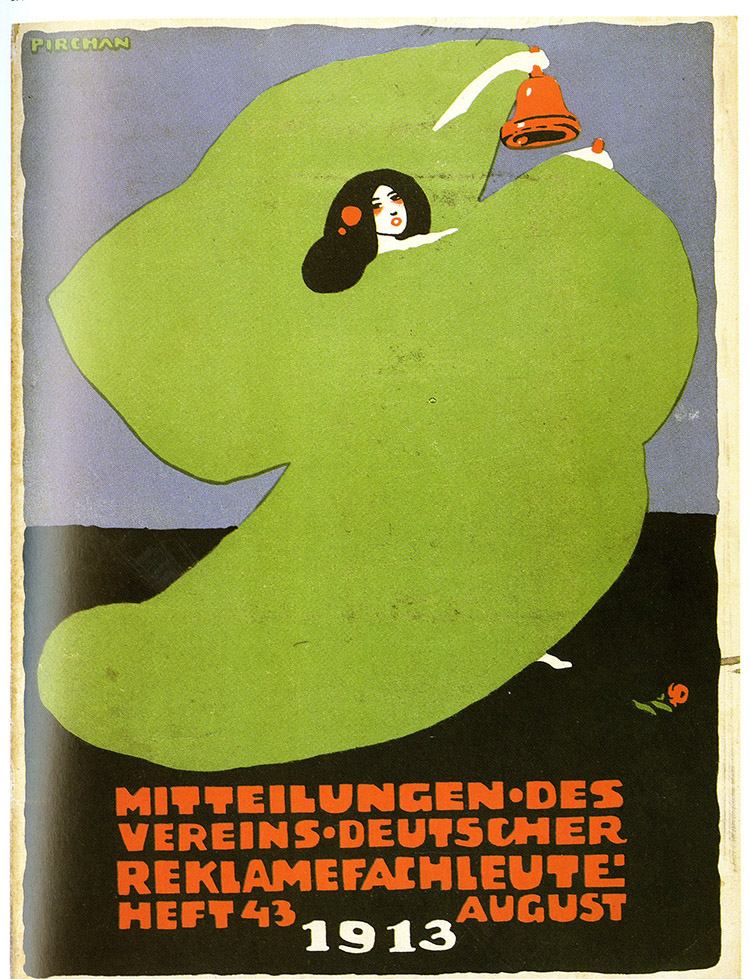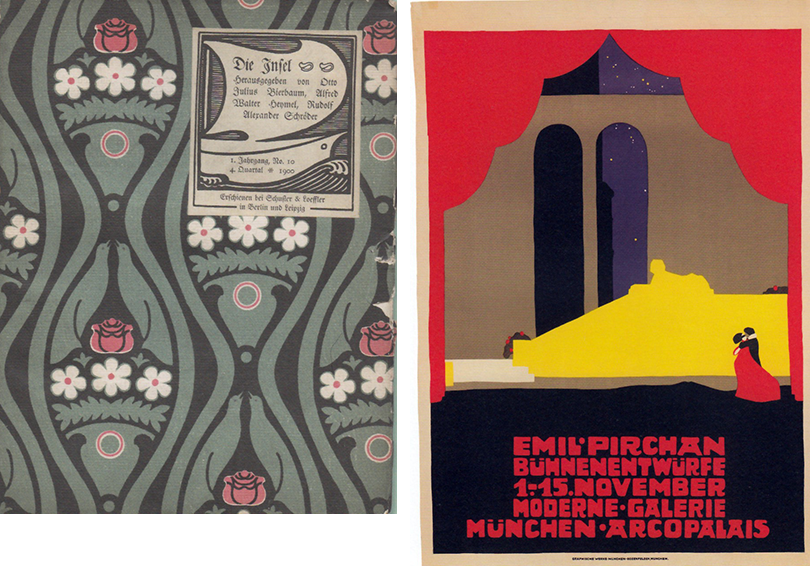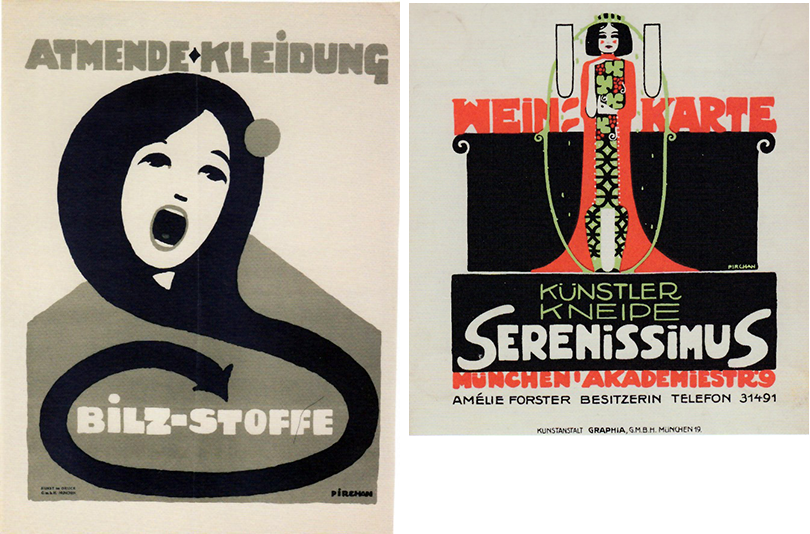
The early twentieth century was a rich period for posters and poster designers in Germany. Lucian Bernhard invented the “sachplakat” or object poster; the poster movement known as the Berliner Plakat flourished under the wing of Berlin’s most successful printer/advertising agency, Hollerbaum and Schmidt lead by Ernst Growald; in 1905 The Verein der Plakatreunde (Association of Friends of the Poster) began and its luscious magazine Das Plakat (1913 – 1922), edited by Dr. Hans Sachs, was the world’s most influential graphic design journal. Munich, where Alois Senefelder invented lithography in 1796, challenged Berlin for the title of design capitol and Ludwig Hohlwein made Munich into a wellspring of German posters. It was also there in 1903 that the Verein deutscher Reklamefachleute (Association of German Advertising Professionals) was founded. Munich was called “The Athens on the Isar,” writes Katja Sebald in her essay in the exceptional new book, Emil Pirchan: A Universal Artist of the 20th Century (Nimbus. Kunst und Bücher) edited by Beat Steffan, which serves as the catalog for the recently closed exhibition at the Museum Folkwang in Essen, Germany. The Prague-born, Vienna-based, graphic, logo, and theater scenic designer Emil Pirchan (1884-1957) was also a Münchener posterist. I have seen (and reproduced in a couple of my books) a small sample of his work, but knew little about his life and prodigious career, which included writing and illustrating children’s books. He also wrote the first monograph on Gustav Klimt.

One of the examples of his work that piqued my interest was the post-Jugendstil cover he designed in 1913 for the advertising periodical Mitteliungen des Vereins der deutschen Rekalmefachleute but I had no real hint that “When you talk about Munich poster art, you are also talking about Emil Pirchan,” quoted in that very same issue. This former student of architect Otto Wagner in Vienna had quite the career as a graphic and all-around designer in Munich where he opened Atelier für Graphik, Bühenkunst, Hausbau, Raumkunst und Kunstgewerbe (workshop for graphic design, stage art, housebuilding, spatial art and applied art). (I just love the guttural sound of those lengthy German titles.)

Although the last thing I need is another hefty (368 page) oversized tome yet this book is worth every last inch of shelf space. In addition to being richly illustrated with original materials faithfully reproduced and lovingly preserved by his grandson, Mr. Steffan, who found crates of the material in his parent’s attic, the utter range of Pirchan’s art and craft is an extraordinary revelation. Although he was not exactly an unknown and stood on the same stage, so to speak, as Bernhard, Hohlwein and the Austrian, Julius Klinger (who are the triumvirate of German posters in the pre-Great War times), he did not get the same historical acclaim, at least in the U.S. Still, Pirchan was regarded as “the representative of a new type of artist,” quoted from Dr. Adolf Saager, a founding member of the Expressionist Die Brücke, in the monograph, “swimming in the wonderful stream of modern civilization with the vigor of youth, without looking back to the romantic twilight of the past.” Flowery but nice words.

Just a casual perusal (although in keeping with the above metaphor I recommend a deeper dive) shows how Pirchan’s brand of modern is at once connected to his times yet powerfully individual in his mix of minimal and maximal form. It is a thrill to be confronted with work that may be over 100 years old yet is as fresh as anything created today. Pirchan does that for me. Rather than write a detailed review of this critically positioned volume of text and images, I will conclude simply to say: this smartly designed and extensively researched book revitalized a period of design I believed I knew quite well. Apparently, happily, I was wrong. There is a lot more to learn.
